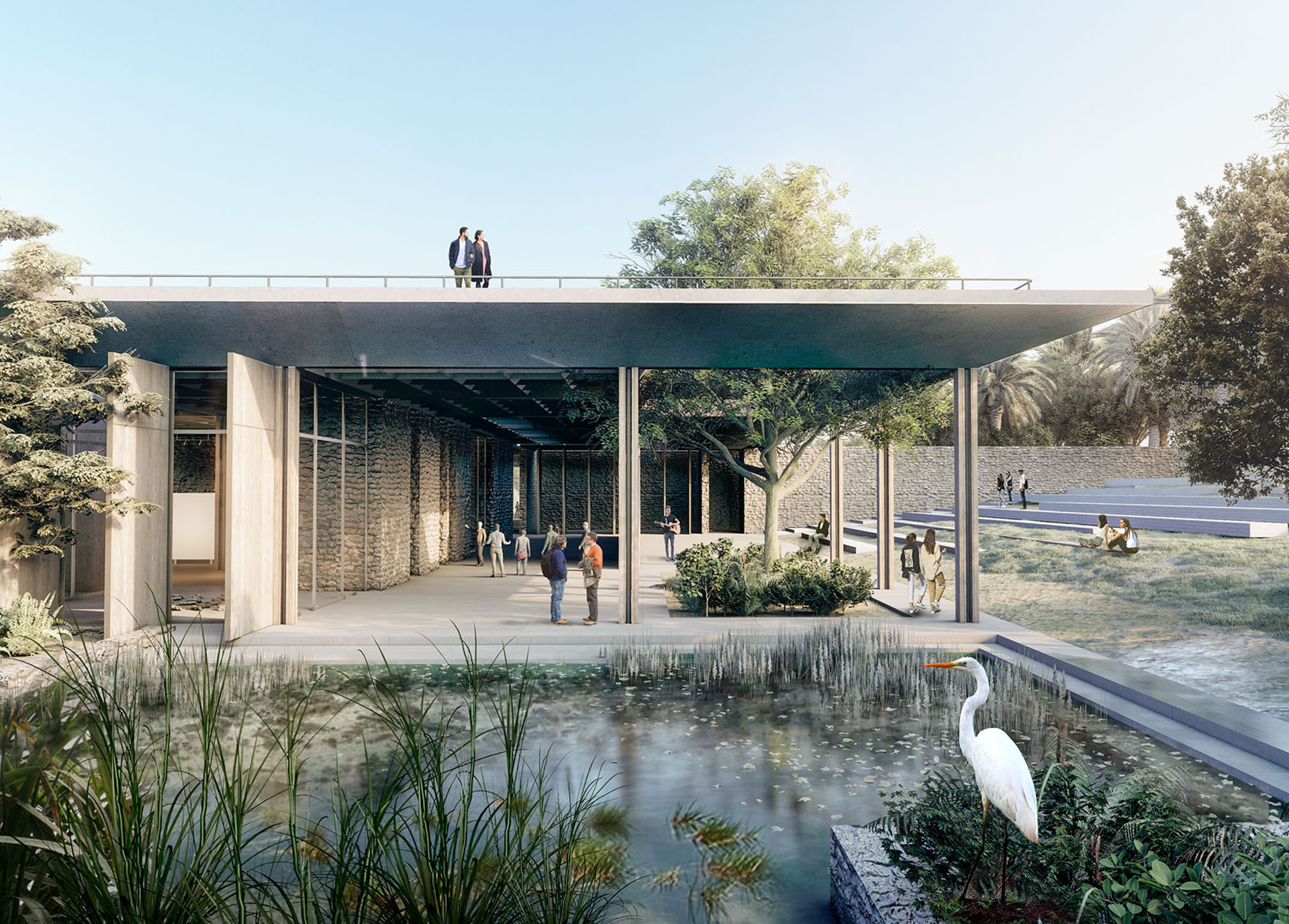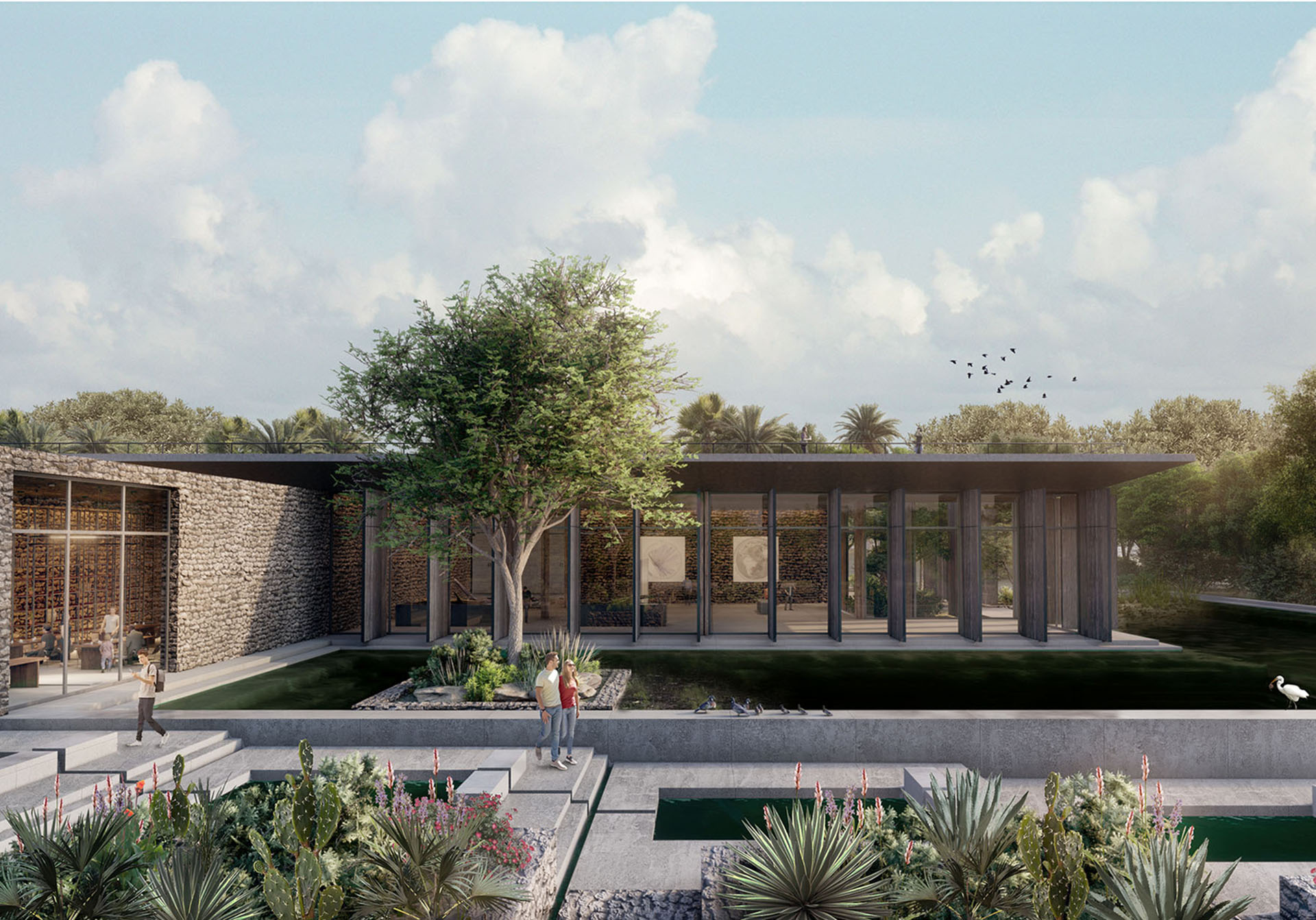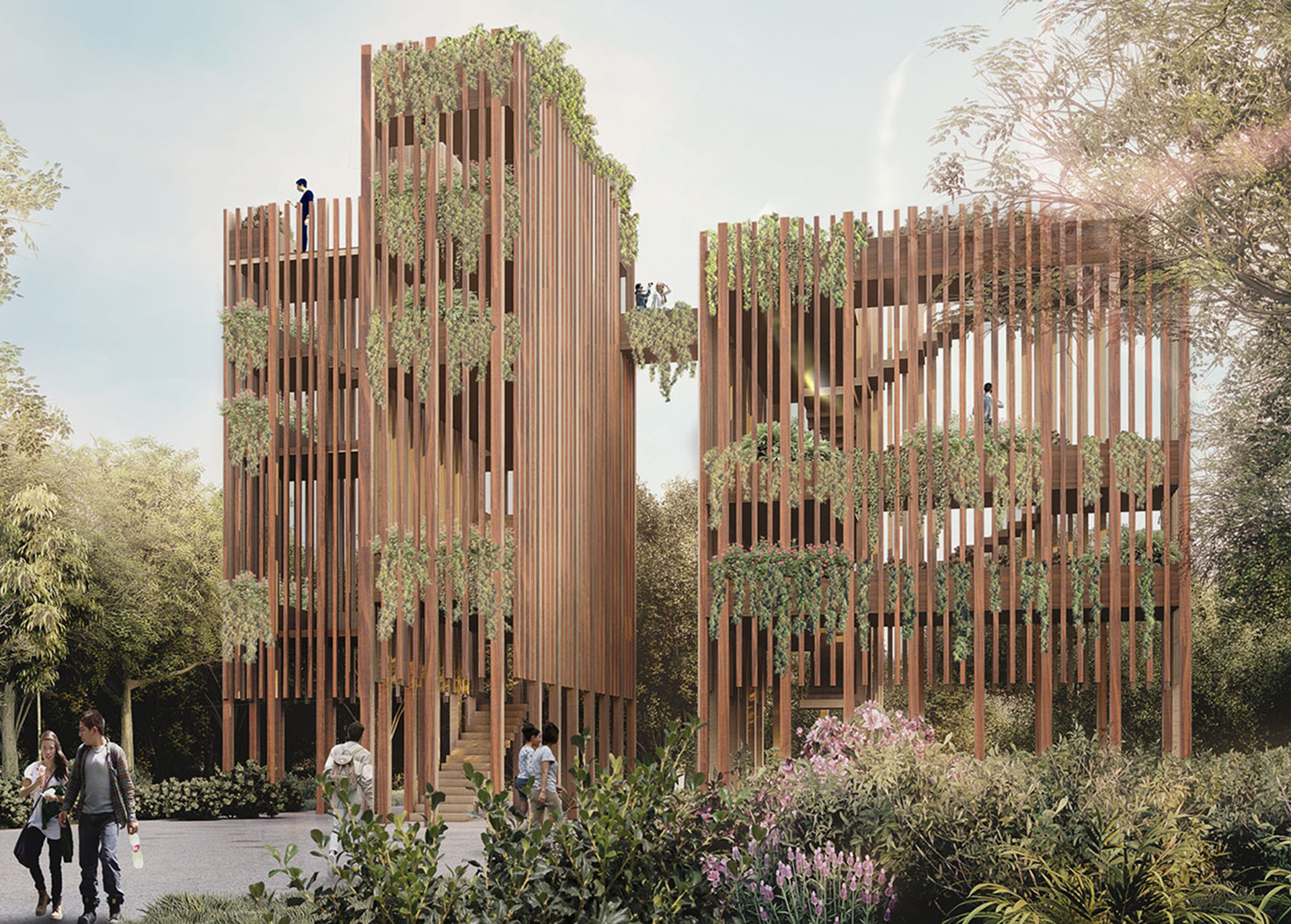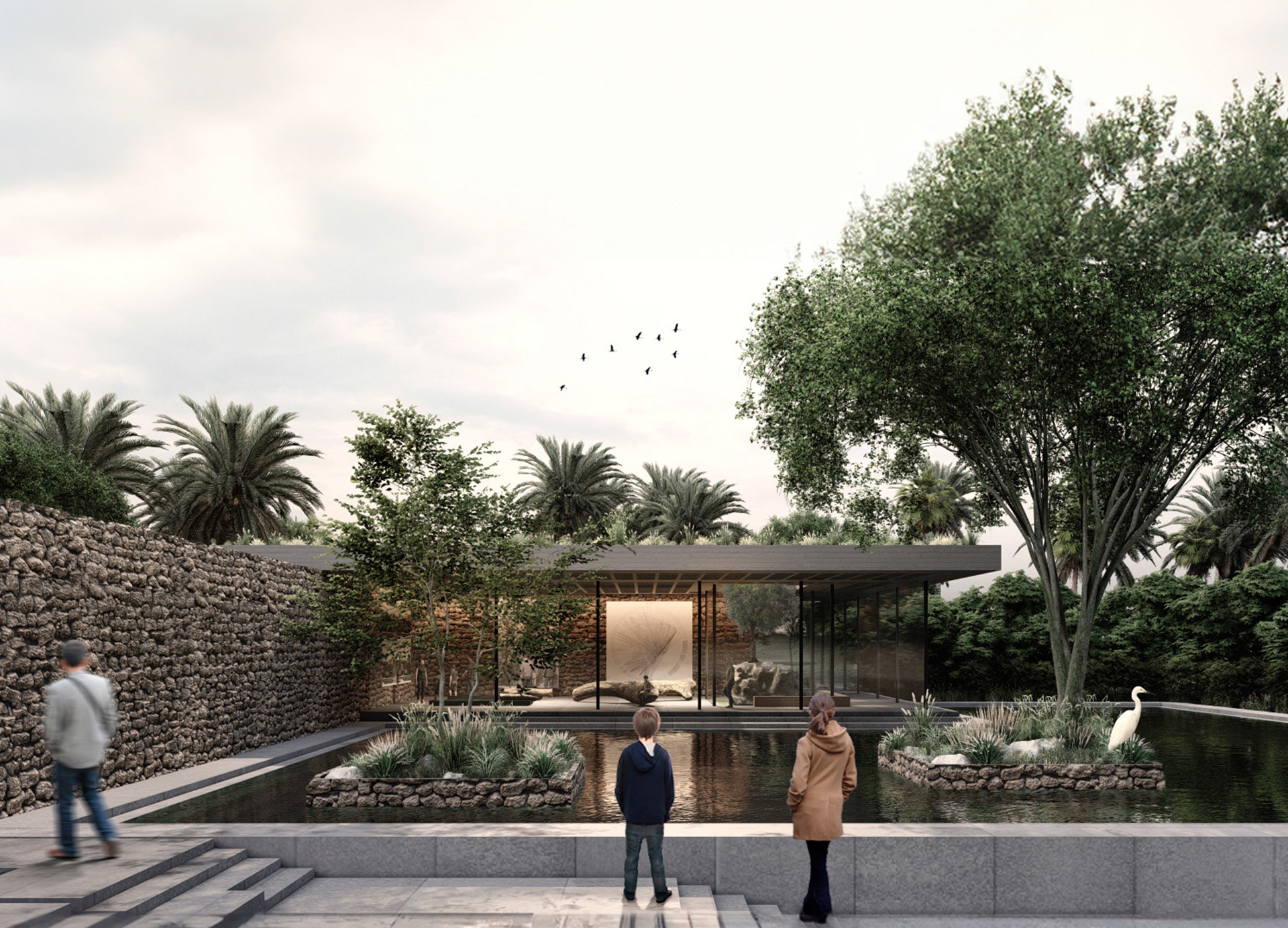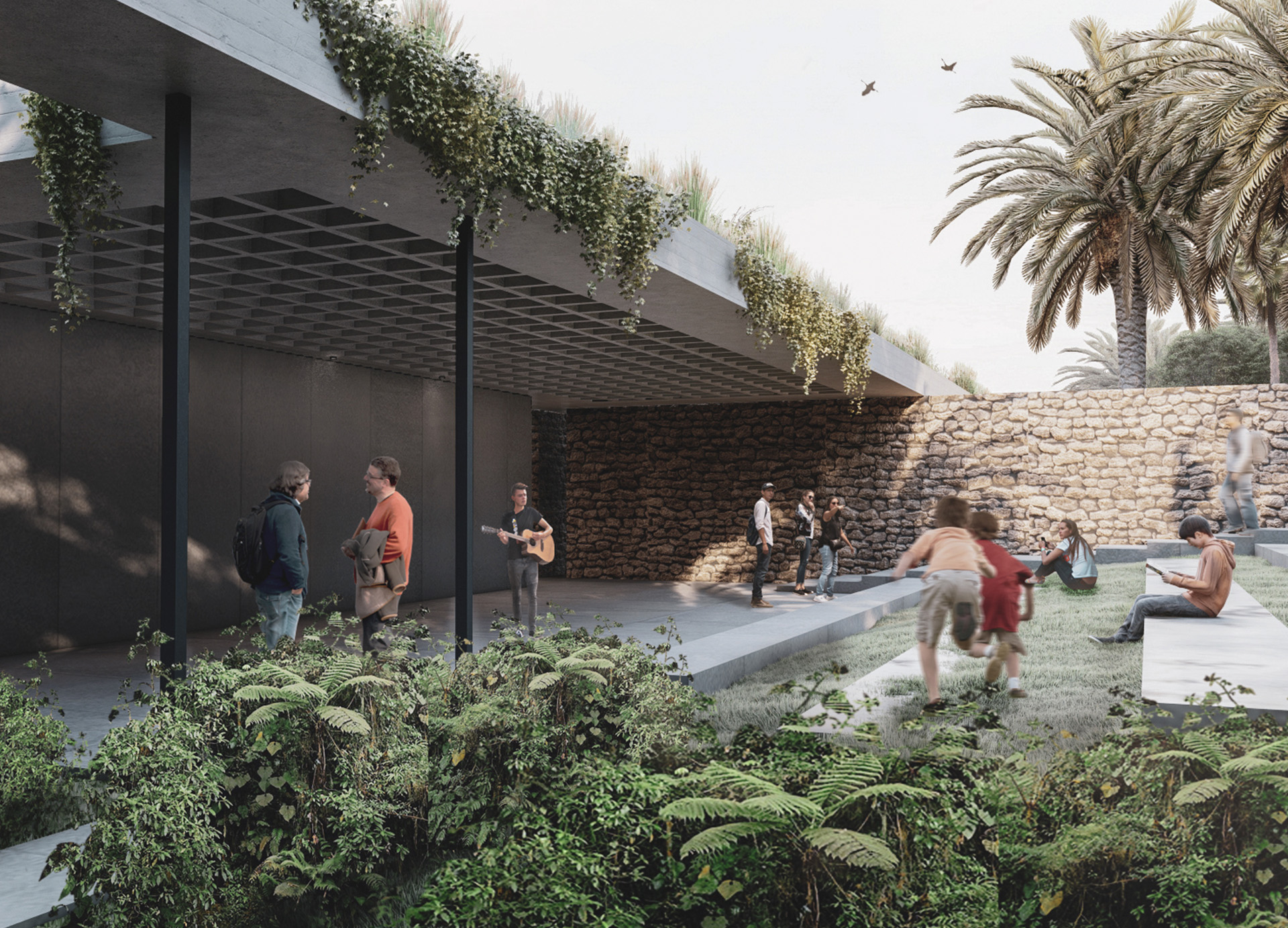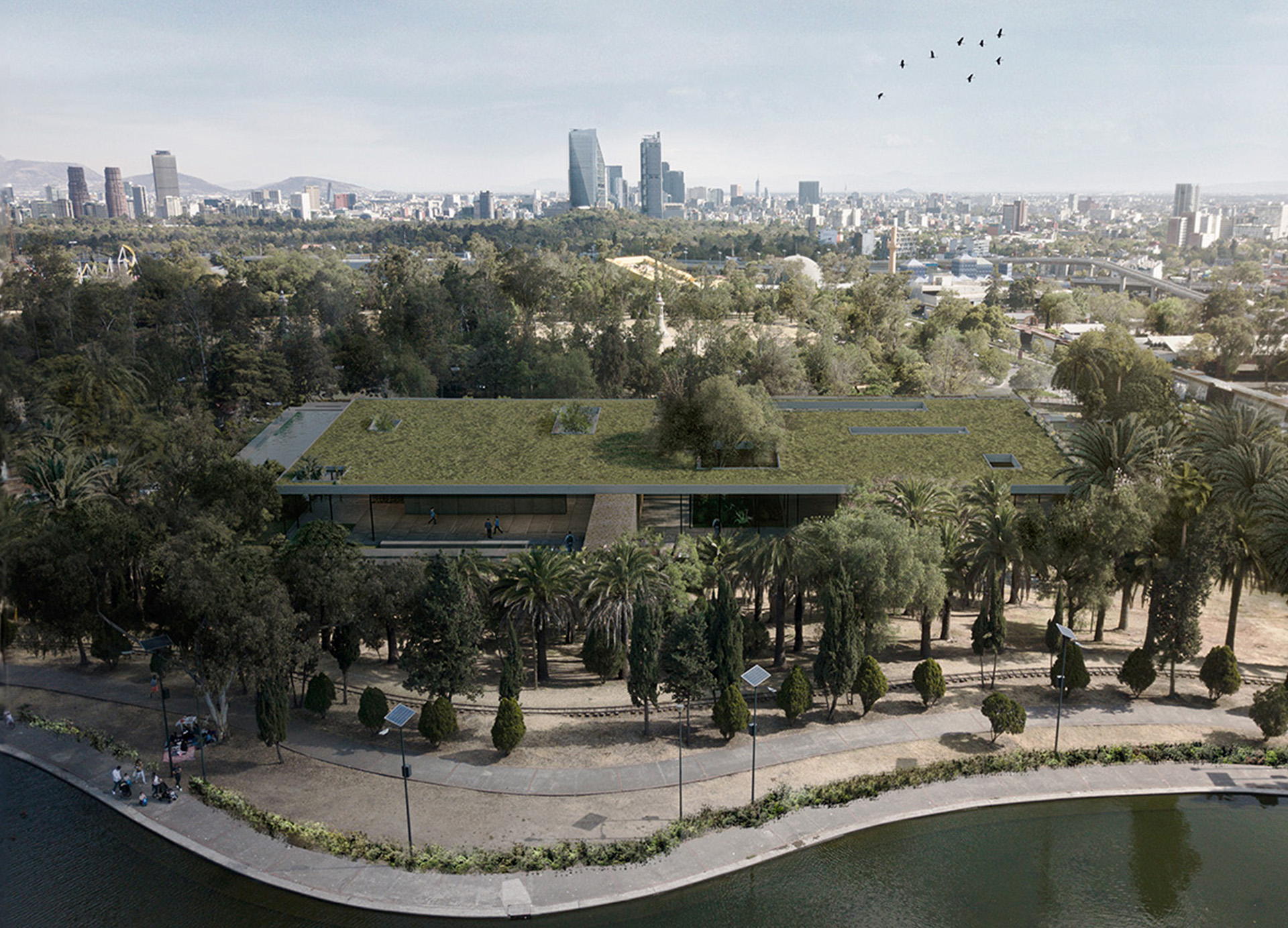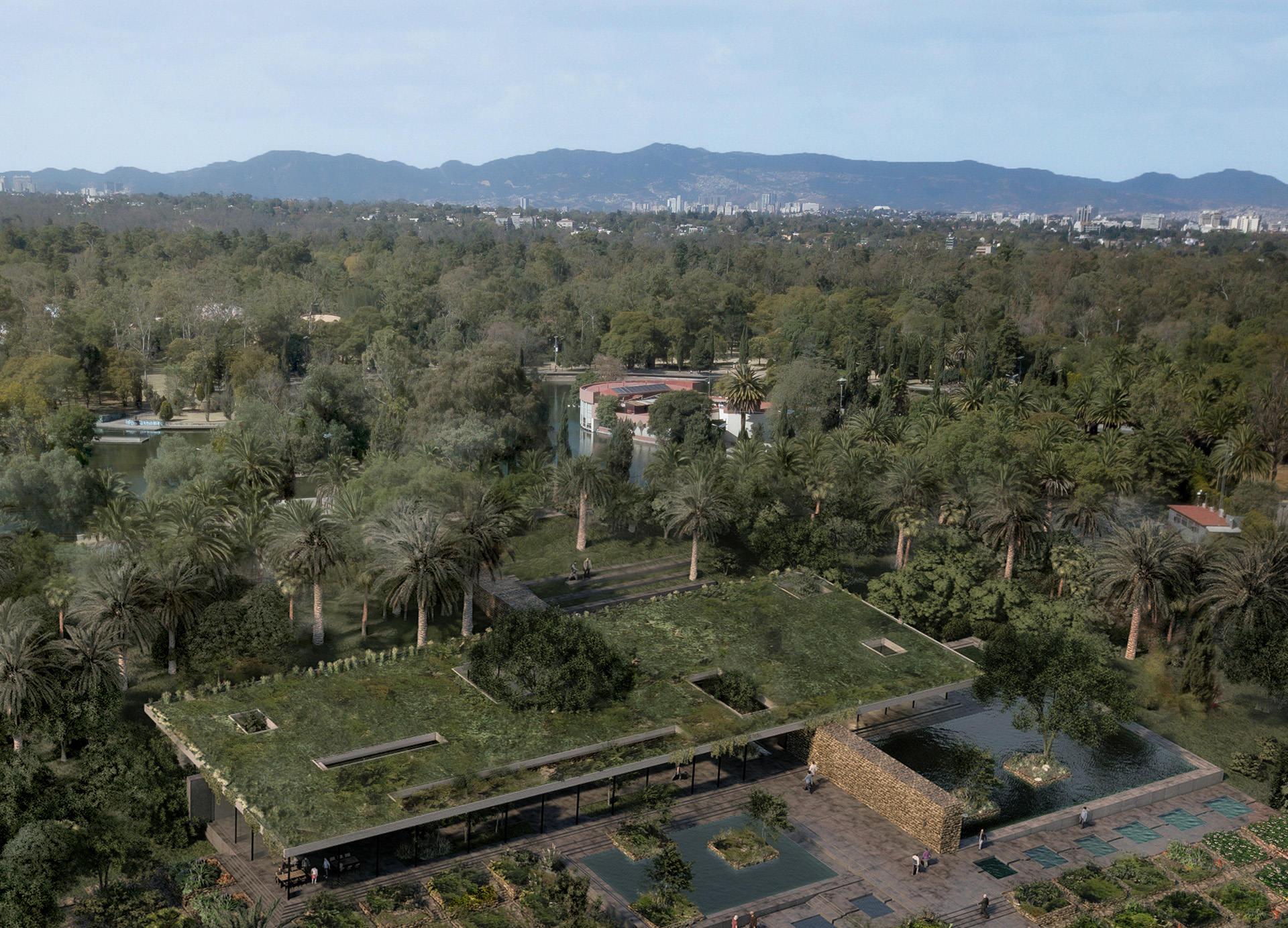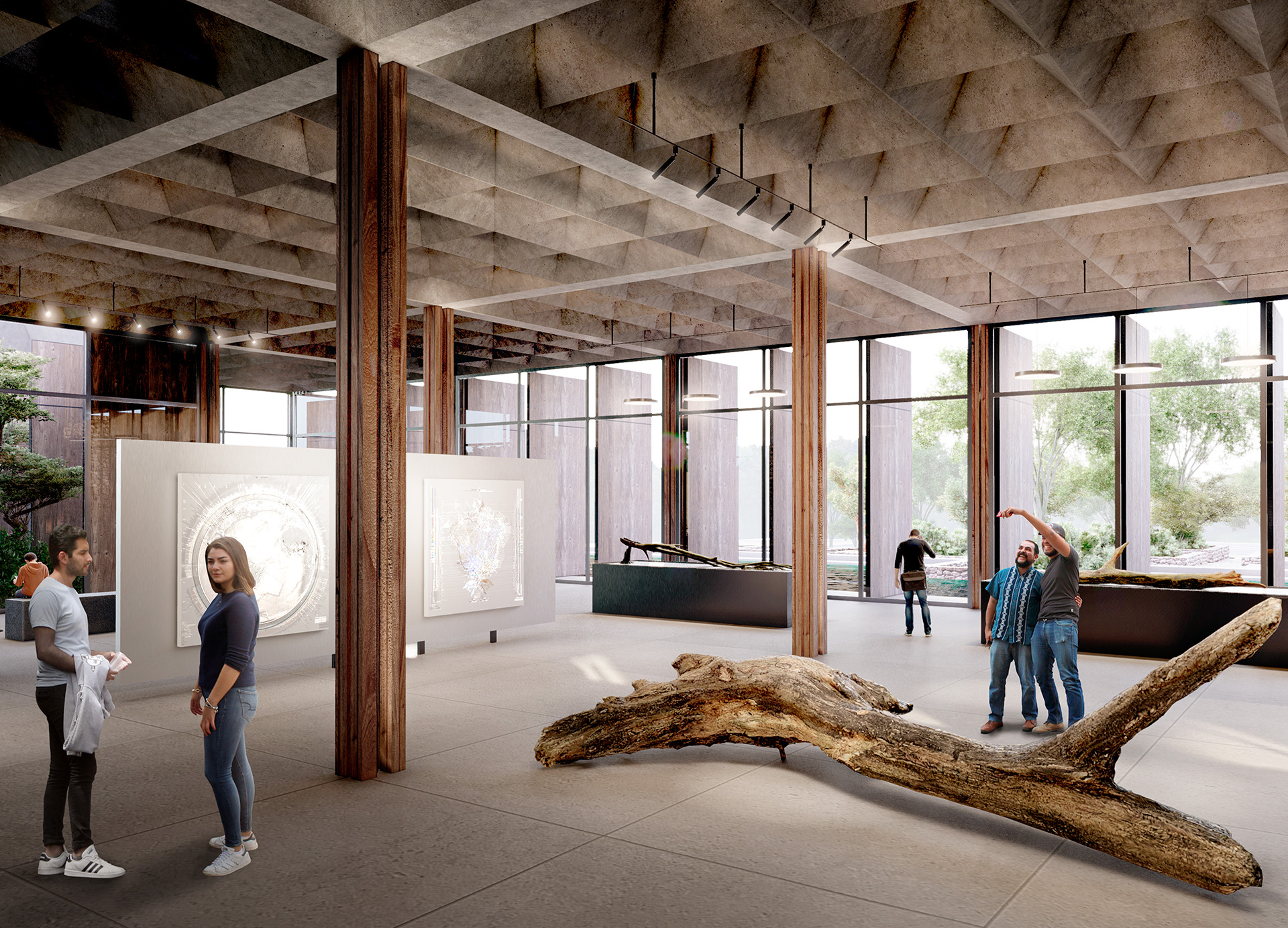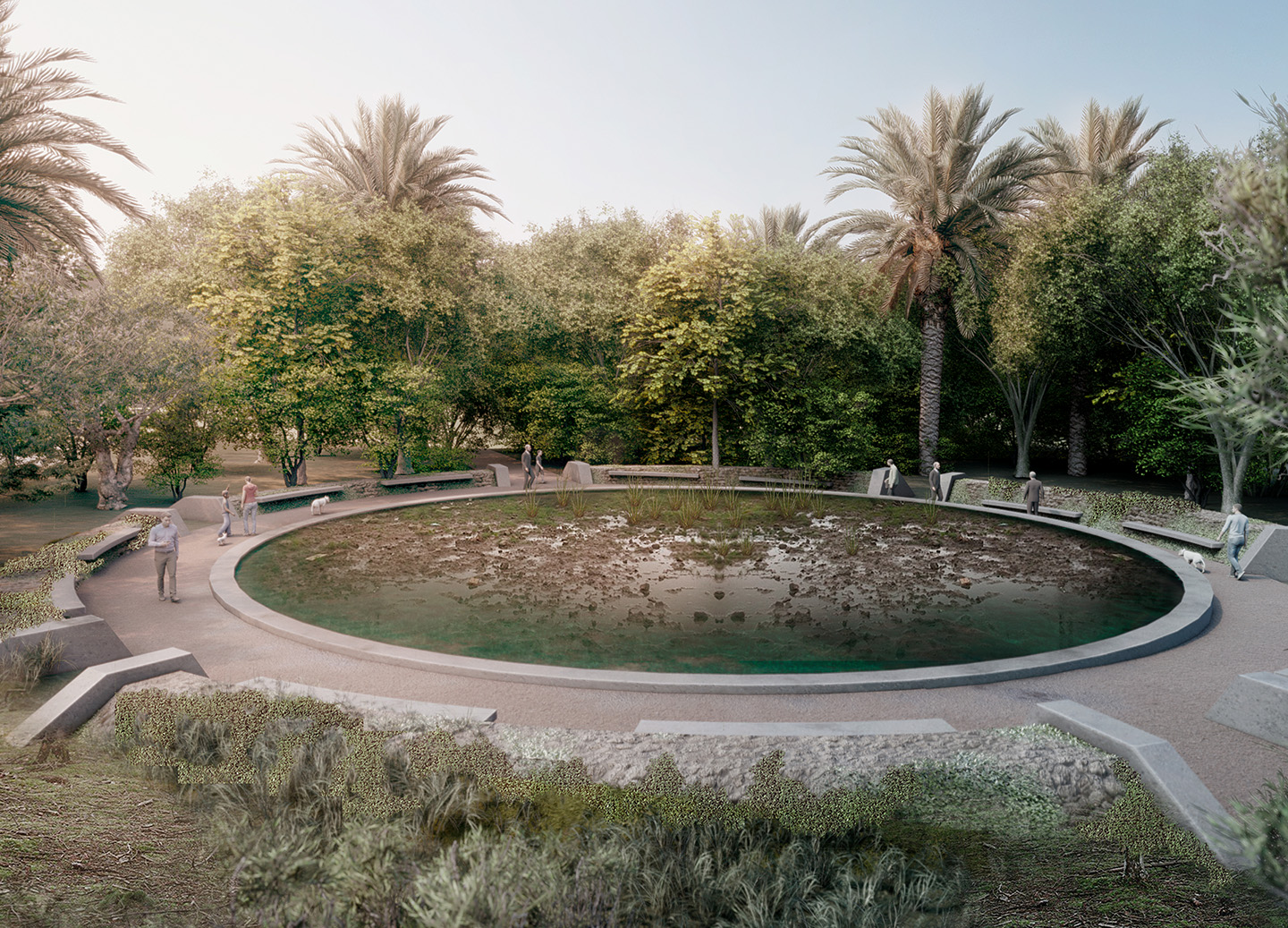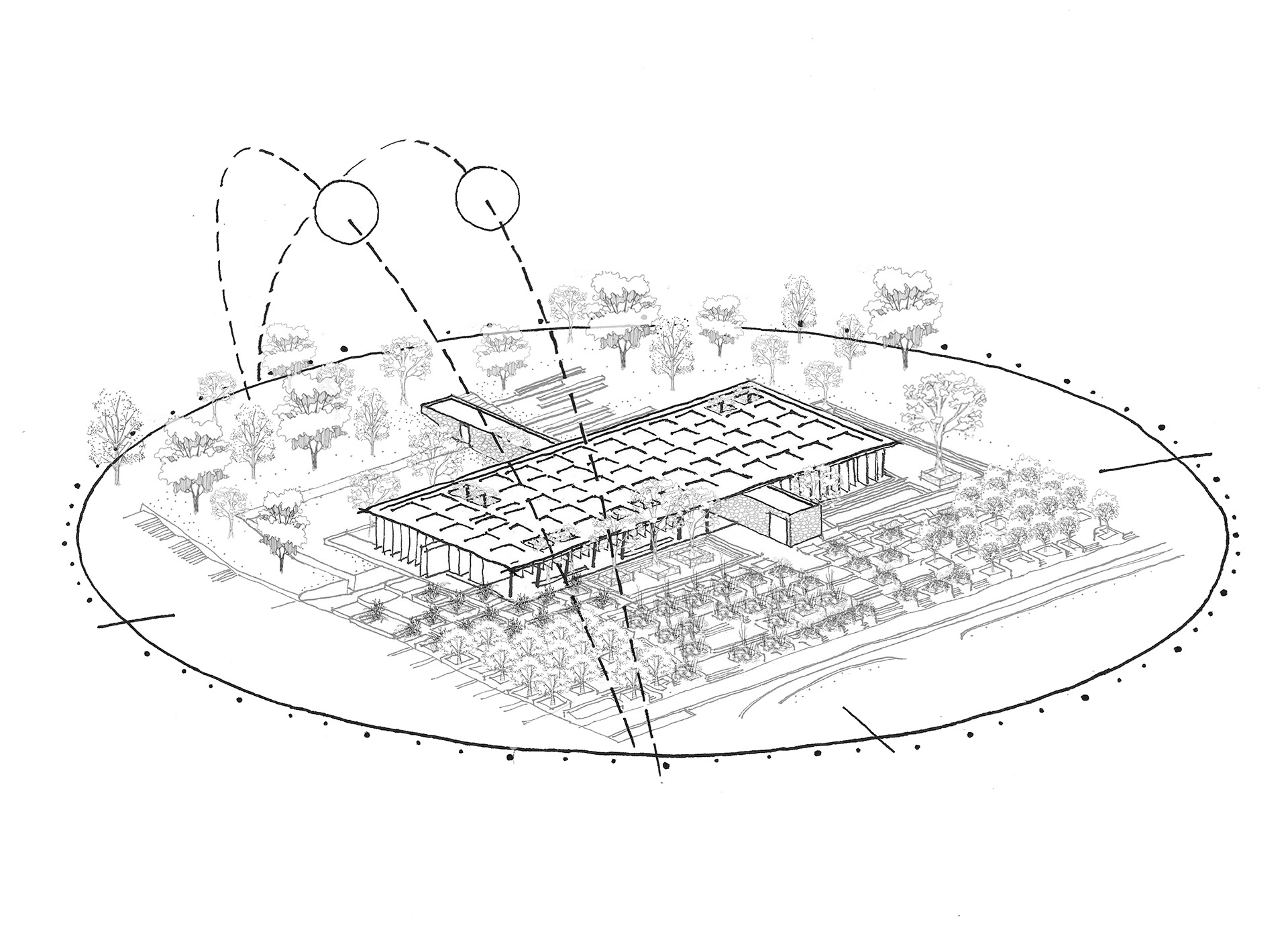Pabellón Centro de Cultura Ambiental
The pavilion of the Centro Cultural Ambiental was developed in response to the competition "Jardín Temático-Etnobotánico, Centro de Cultura Ambiental Chapultepec" organized by SEDEMA and the Secretariat of Culture of the Government of Mexico in 2020, being one of the five finalists.
It is built on a stone base crossed by four rusted basalt walls on the north-south and east-west axes, which divide the rectangular floor plan into four sections; two of them for exhibition and multipurpose room and the others for community activities, linked by a central lobby.
The building encourages appropriation and interaction with the forest and the Ethnobotanical Garden; it takes advantage of the difference in levels in the topography to add a semi-basement for service areas that second the museographic use.
The construction is based on a hybrid system: a low CO2 emission concrete casemented roof and vertical steel elements. The oxidized basalt walls will replace the columns and will function as load-bearing elements.
The slab is configured by means of diagonals that allow the planting of vegetation on top. Integrated into the roof, the drainage system ensures the proper functioning of the vegetated roof, capturing rainwater and discharging it through the center of the columns to a storage system.
THE ETHNOBOTANICAL GARDEN
The Ethnobotanical Garden is a continuation of the pavilion's outward layout and responds to the existing topography. The rectangular plots delimited by rusted basalt stone walls are placed on a series of platforms that follow the slope of the land and are harmoniously integrated, as a reminder of the pyramidal foundations of the original peoples.
The irrigation system takes advantage of the differences in level of the platforms, so that, by means of gravity, the water from the bio-pond, fed by water from Lago Menor, is carried to each plot by means of apantles that accompany the paths, facilitating its maintenance, reducing operating costs and returning the excess water to the subsoil by means of an infiltration wetland.
The collection of species exhibited in the Ethnobotanical Garden are classified as Timber, Food, Medicinal, Magic or Cult and Ornamental, according to the research of Dr. Montserrat Gispert.
THE WHOLE: LINKING THE SECOND SECTION OF CHAPULTEPEC
The Environmental Cultural Center integrates the area through 3 main pedestrian paths that cross the land and offer visitors different activities and points of interest. The old "El trenecito" path offers visitors a tour where they can discover the area accompanied by apantles, pollinator gardens and dahlia plantations. The second route consists of the pedestrianization of Rodolfo Neri Vela Avenue, the design of new walkways and the linking of existing walkways. Finally, the circuit that surrounds the Lago Menor, where the visitor will be able to admire plants located at the edges of the lake and the presence of migratory birds.
Throughout the complex are located observation platforms: basalt stone rings that contain inside a living sample of the main endemic ecosystems of the basin of the Valley of Mexico. Taking advantage of the existing species in the site, the ecosystems to be shown are pine forest, Quercus, Juniperus, grasslands, xerophytic scrub and halophytes.
To facilitate operation and reduce maintenance costs, a gravity irrigation system was integrated, taking the existing treated water in the area and distributing it by means of apantles throughout the site, reincorporating the excess liquid to the subsoil.
COMMUNITY DEVELOPMENT. RECONSTRUCTION OF THE SOCIAL FABRIC
The Environmental Cultural Center should be a destination point for people visiting the Second Section of Chapultepec Forest, a space that provides the necessary conditions of safety, inclusion and accessibility that allow visitors to enjoy the biodiversity of plants and its museographic offer, generating awareness about the situation of climate change and the existing tools to stop and reverse it.
The Biocultural Laboratory includes programs, projects, workshops, exhibitions and other content to strengthen the social fabric.
The implementation for community development that the Environmental Cultural Center seeks to detonate is based on the creation of urban governance models that achieve a dynamic balance between socio-cultural, environmental, territorial, economic and public policy aspects.
